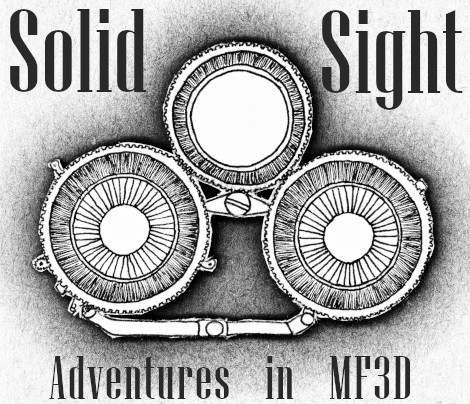
Introduction

It is difficult to try and reconstruct the history of the King Inn line of products given the sparse information available on the web. The Su Mond Industrial Corp. based in Taipei launched the King Inn viewer in 1990.1 There was an entire King Inn system on offer, complete with a camera, viewer (accommodating both prints and slides), mounts and mounting press. It was designed for the high end wedding market, but it was a commercial failure. Stock lasted in North America until the end of 2002. The viewer was sold as a standalone viewer, or with a protective brief case emblazoned with King Inn branding. An adapter to view 2 standard 50mm × 50mm (2” × 2”) slides for 35 mm film was included with the viewer, as well as a power adapter to take 110V AC down to the required 6V DC at a current draw of 600 mA.2
The King Inn viewer
Specs
- Lenses: 83 mm focal length uncoated PCX 3
- Clear lens diameter: 25 mm vertical; 32 mm horizontal
- Interocular: 64.5 mm
- Accepts cardboard slide mounts with dimensions 132 mm x 80 mm
- Weight: 542 g (without batteries)
- Outer dimensions: 8.5 cm x 16.5 cm x 14 cm (min focusing distance; 18 cm for max)
- Focusing screw: ¼” – 20
- Disassembly: Phillips screwdriver
- Batteries: 4x AA
- Power adapter: 6 V, 600 mA
- Bulb: F4T5/CW (6” length, 4 Watt, T5 tube in cool white)
- Angular magnification*: 2.3x at infinity focus; 2.8x at 10” focus
* Assuming an eye-relief of 2 cm
The manufacturer of the SaturnSlide, Alan Lewis, made his 46 mm diameter, 78 mm focal length achromats available for purchase via Rocky Mountain Memories, so you may come across a King Inn viewer that has been upgraded by replacing the stock single element lenses with these achromats.
Accessories
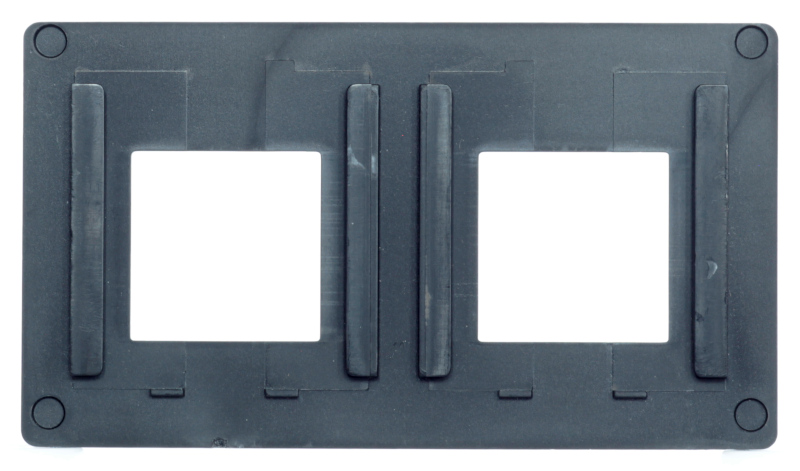
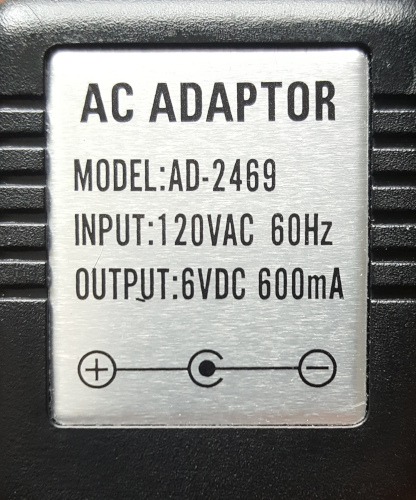
Build
The construction is fairly nice. It is easy to take apart when it needs cleaning. There is a battery compartment, but you need to remove the entire light panel to install the batteries. It is a bit of a chore to install the batteries (4x AA) since the two contact springs for the front bulb get in the way, and I’m afraid of applying too much force to the flimsy-looking molded plastic compartment. I haven’t had the need to use batteries, so I haven’t bothered at this point.
The diffuser panel sits in a slot, so there is a bit of play, and it can rattle around a bit. Also, the lens panel simply sits inside the main body. The only thing preventing it from falling out is the focusing knob butting up against its slot in the main body. With this design, there’s a fair bit of slop in the front panel.
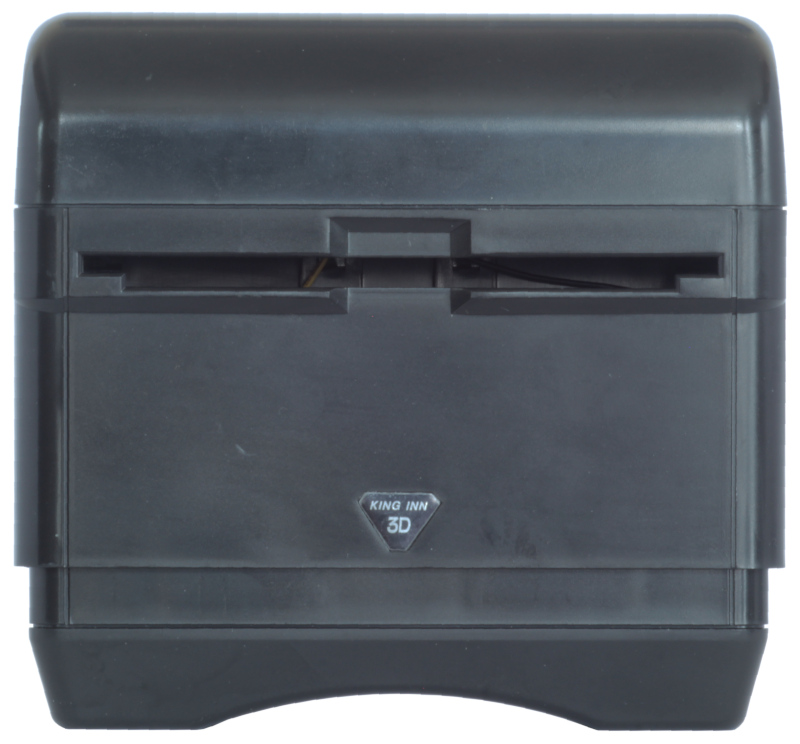
Ergonomically, the viewer is quite comfortable to hold, and the focusing knob can be easily used while looking through the viewer. A rounded forehead rest is great in that it blocks out stray light and prevents the lenses from becoming dirtied, but it does prevent you from getting as close as you might like. This limitation has the advantage that the lenses stay cleaner and your eyelashes can’t brush up against them. The slot in the viewer measures 134 mm, which is not long enough for the 140 mm plastic mounts by the 3D World company. The slot is however wide enough. I expect that the slot could be lengthened slightly to allow for viewing the plastic mounts. The slot would have to be lowered somewhat as well, since slides mounted in plastic sit higher up than cardboard mounts.
Focusing
At the King Inn’s closest focusing distance (~60 mm), it is not possible to see an entire 50mm x 50mm slide. The internal chambers cut off the left and right of the slide, only permitting you to see about a 46 mm horizontal span. The chambers are just tall enough so as to not cut off the top or bottom of the slide if you position your eyes perfectly. The view is about as large as the view in a 3D world STL viewer, although it is much more comfortable to view in the 3D world viewer since I have to strain for my eyes to focus that close. If you have myopia, it might be worth while to shorten the chambers since you won’t really have a need to use it at the far focus distances anyway.
At a focus setting of around 81 mm, I stop seeing clipping of the horizontal view, although the septum is not sharp. Personally, I can focus all the way out to about 89 mm. (I was initially rather surprised that I could get an acceptably sharp image beyond infinity focus, but conceptually there’s nothing preventing this, as long as your eyes have the range of focus. I expect that as my eyes age and presbyopia sets in, I will lose the ability to do so.) The image at such a far focus setting is considerably smaller, and the window becomes more prominent. Unfortunately, the glare from the chambers makes the window edge ill defined and all the stray light distracts and draws attention away from the slide.
At first I thought the finite diameter of the lenses was restricting the view by clipping the corners, but I believe it is just reflections off the chambers causing a decrease in contrast around the edges. I believe flocking the two chambers would improve the view significantly. In addition, as the viewer is focused to further distances, the bottom and top surfaces of the main body become exposed. The plastic of these surfaces is so shiny that it reflects specularly and forms a reflected image of the slide. These surfaces are covered up as you focus closer, and the effect disappears at distances closer than ~71 mm.
The viewer has a sliding box design; if you keep turning the focus wheel past the infinity focus point, the inner part with the lenses will come right out. (Be careful not to lose the focus wheel, as nothing is holding it in place.) This will allow you to clean the inner surfaces if necessary, or to flock the two chambers.
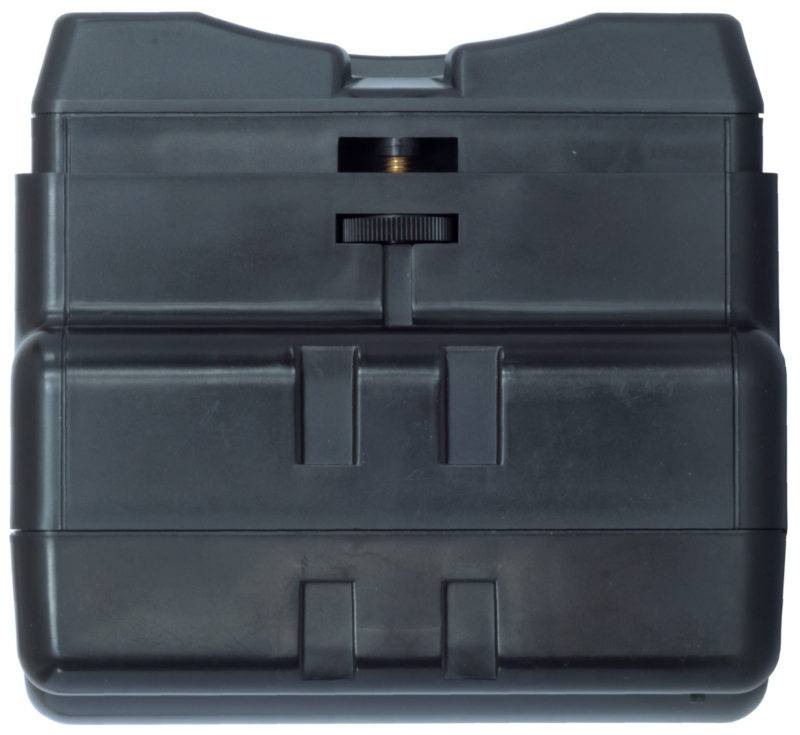
It’s difficult to accurately measure the slide-to-lens distance, and since with optics you are often dealing in reciprocals, this can lead to fairly large errors. All distance measurements in the above section are the distance between the slide and the rear element. I believe that this viewer should provide an acceptable glasses-free experience for nearsighted folks up to about -6.0 dioptres. There is some tolerance for hyperopia as well, but it is more challenging to quantify.
Lenses
The King Inn’s lenses are decent, but not spectacular. They are planoconvex lenses with a 34 mm diameter and a focal length of 83 mm.3 (My crude measurement gave 84 mm ± 1 mm, so I think the stated value is reasonable.) The convex surface faces the inside of the viewer. In my opinion, the extra 8 mm f.l. is not very noticeable compared to a 75 mm 3D World viewer. By focusing closer, it’s possible to achieve the same angular magnification as the fixed focus 3D World viewer despite the slightly longer lenses.
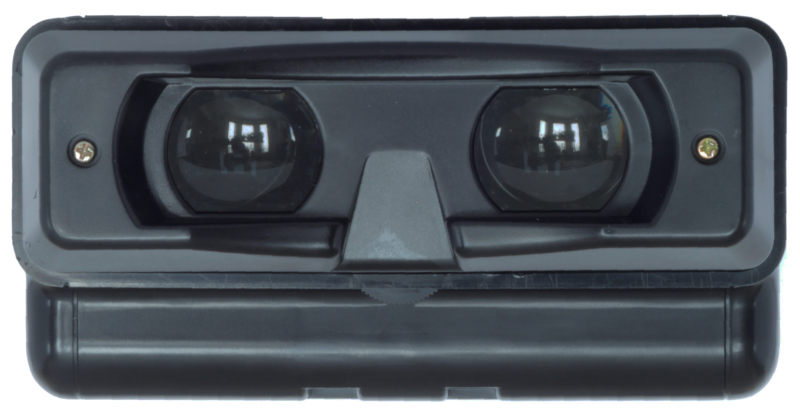
Chromatic aberration is noticeable, in particular with high contrast B&W slides, but it is not as objectionable as I might have expected a single-element lens to be. The lenses are only sharp in the very centre portion, perhaps a radius of less than 1 cm. Looking through the outer portion of the lenses yields a heavily distorted image. I don’t expect this to be a great viewer if your inter-pupillary distance lies far outside the norm.
The eye relief seems pretty decent, although at close focusing distances, the edges of the slides will be occluded as you pull your eyes away from the viewer. As stated above, the headrest limits how close your eyes can get to the lenses. I estimate that my eyes are about 2 cm away from the lenses when my forehead is on the headrest.
Lamp
The illumination in this viewer is provided by fluorescent bulbs. Mike Davis has an excellent comparison4 of different colour temperature bulbs. Although fluorescent bulbs typically have poor Colour Rendition Index (CRI) ratings, I’ve found the colour to be adequate.
A slide switch at the back allows you to toggle between “back light”, “front light” and “off”. I find the viewer to be a bit of a bust for viewing prints. The front bulb intended for reflection mode is positioned extremely close to the slide. The light strikes the print at such a grazing angle that any dust on the surface stands out like a sore thumb. Even worse, the pocked surface texture of a matte print causes an array of miniature craters that cast shadows across the image.
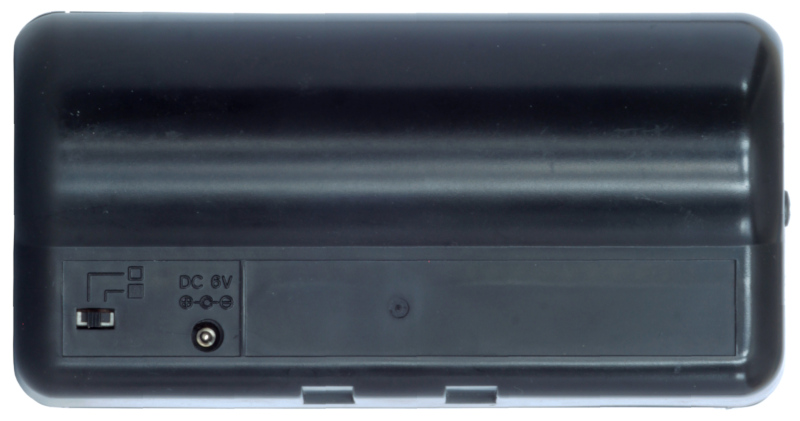
Viewing prints with the rear bulb (transition mode) isn’t much better, as you might expect. The light is attenuated by the paper base, making for a very dim view. Additionally, the paper fibres create an additional texture that obscures the image. Interestingly, the tone of the print seems to change when viewing in transmitted light, I guess possibly due to wavelength-dependent scattering effects. In any case I don’t expect most people to use the viewer for viewing printed materials since (to my knowledge) 132 mm x 80 mm was never a popular stereo card format.
The rear illumination bulb is positioned slightly above the center line of the viewing aperture. The bulb isn’t long enough (or far enough away from the diffuser) to provide even illumination across the entire image. The view is brightest near the septum and there is quite significant light falloff some at outside edges (e.g. left side of left view and right side of right view) and also the bottom. The light panel can be removed with two machine screws, allowing the viewer to be used in steal-the-light mode. Unfortunately, the contact springs for the front panel protrude from the viewer when the light panel is removed, so they are likely to snag on something and become damaged.
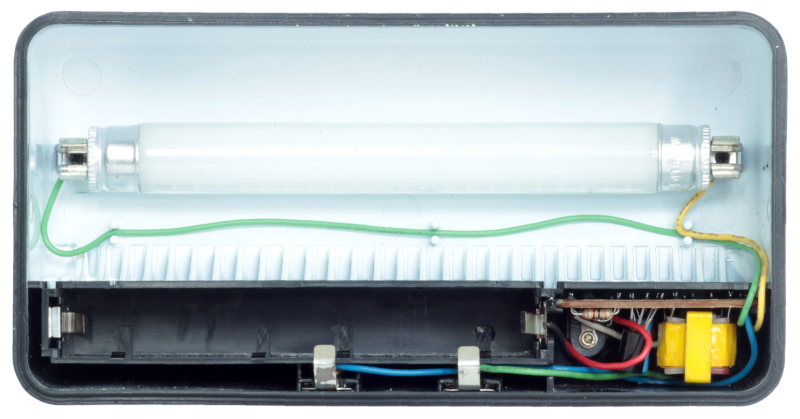
Verdict
Overall, the King Inn represented a great value viewer for its price at the time of its introduction. I don’t know for sure, but I think it’s possible that this viewer introduced the 132 mm x 80 mm transparency format which continues to be the dominant format of MF3D today. If you didn’t want to build your own, it was really the only commercially available viewer in the 1990’s (apart from 70+ years-old antique viewers for glass plates). With some upgrades (improving FOV by shortening the lens chambers and reducing glare by flocking the inside), it can be quite good. If you can upgrade the lenses to achromatic ones, I expect it would be very good.
However, since the introduction of the 3D World fixed focus STL viewers, this viewer has fallen by the wayside, in particular for those not requiring focusing. The out-of-box view provided by the 3D World viewer is undoubtedly superior to the King Inn, and in addition, it is lighter and accommodates the larger plastic 3D World slide mounts. At the time of this writing, both viewers are discontinued, but it is considerably easier to locate a 3D World fixed-focus viewer than the King Inn, at least in North America.
